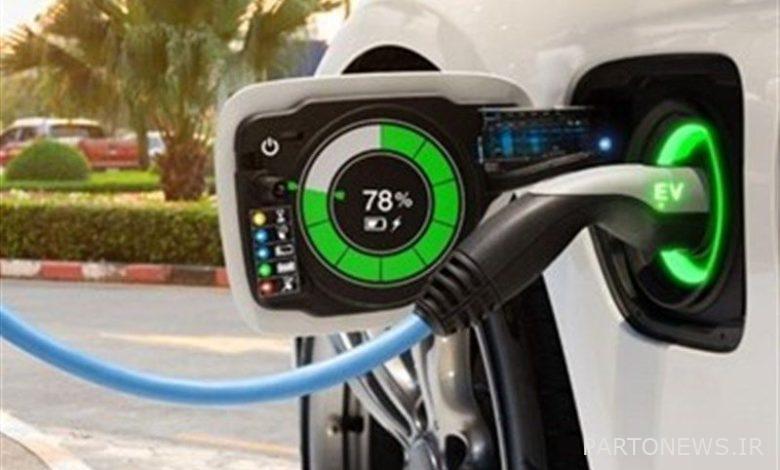The entry of old cars into the field of electrification

Referring to the new Tesla plant, which is being built near Berlin with a maximum capacity of 5,000 to 10,000 cars per week, a spokesman for Volkswagen said that Tesla is setting new standards for productivity. And the increase in activity in the region is “Gronehead”. The plant has a capacity of more than double the total production of German electric vehicles in 2020.
However, a Volkswagen spokesman denied Wednesday’s report in the German newspaper Handelsblatt. In the report, the company’s CEO, Herbert Diss, announced at a September monitoring meeting that the transition to electric vehicles would cost the company up to 30,000 jobs. Electric vehicles have so far had fewer parts than cars with internal combustion engines and therefore require less labor to produce.
One estimate suggests that 100,000 jobs in the auto industry could be lost by 2025 as a result of electrification. German automakers are trying to overtake electric car makers by building more efficient production platforms. While Volkswagen currently needs 30 hours to build its ID30 electric car, Tesla produces its Model 3 in just 10 hours. Volkswagen’s Wolfsburg plant, the world’s largest with 50,000 workers, does not currently produce electric vehicles, but the company plans to build a new electric sedan at the plant from 2026.
Thomas Schmmel, chief technology officer, told Manbij magazine that the German car giant also plans to add the car charging and energy business to its initial public offering plans for its battery division. According to him, no decision has been made so far, and it will probably take up to two years for new companies to start and prepare for the stock market.
According to a report in the New York Times, General Motors has also spent billions of dollars to electrify its cars and trucks over the past few years to compete with Tesla. The company has announced that it will stop selling its gasoline cars by 2035. GM plans to double its annual revenue to $ 280 billion a year by 2030, relying heavily on new electric cars and trucks, and other new sources of revenue from software and services. Will also add to it.
The CEO expects sales of petrol cars to grow relatively slightly, but electric cars will have a tremendous growth opportunity, General Motors CEO Mary Bara told reporters. GM, on the other hand, hopes to make its online car taxi services more active, create its own insurance products, and expand its defense contracts.
According to Barra, these plans will allow the company to double its revenue. If GM has a goal, that goal is Tesla; It is the largest manufacturer of electric cars and the most valuable automaker in the world to date. Tesla’s market capitalization is about $ 800 billion, about 10 times that of GM. In the three months to September, Tesla shipped 241,000 vehicles worldwide, significantly more than the electric vehicles General Motors sold throughout the year.
Other automakers have invested billions of dollars in the development of electric vehicles. Ford Motor Company has started selling its Mustang wrist electric car this year and looks ready to beat General Motors with its new pickup, the F150 Lightning, which launches next spring.
Several startups are also hoping to sell electric cars; Among them are startups Rivian, which started building an electric pickup last month, and Lucid Motors, which plans to start selling a luxury electric sedan this month. General Motors also briefly introduces the electric version of the popular Chevrolet Silverado pickup; This pickup will have a glass roof and will be driven on all four wheels instead of the front two. The car will be manufactured at the company’s partner plant in Detroit.
General Motors’ new electric Hummer chassis is also set to go on sale later this year. On the other hand, General Motors will add the Cadillac Lyric, which is also an electric chassis, to its electric vehicles next year. The company has also announced that it is working on its Super Cruise Driver Assistance system, which enables hands-free driving on local roads and detects traffic lights and stop signs. General Motors’ ultra-cruise system is expected to be available in 2023 for use on two million miles of US-Canada roads; The supercruise system currently operates only 200,000 miles from major highways.
GM has announced plans to introduce 30 new electric vehicles worldwide by 2025, 20 of which will be in the United States.
To that end, GM plans to build half of its factory capacity in the United States and China by the end of the decade to build electric vehicles. According to another Reuters report, Indian carmaker Tata Motors recently announced plans to invest more than $ 2 billion in electric vehicles over the next five years.
Tata had previously said that TPJJ and state-owned IDQ had agreed to invest $ 1 billion in the company’s electric vehicles.
The company’s new unit is set to invest in new models, proprietary platforms for electric vehicles, charging infrastructure and battery technologies. This is the first funding from an Indian carmaker to promote clean transportation in the country. By chance, Tata Motors is the leading seller of electric vehicles in India with Naxon electric high-end and small Tigor electric car and plans to launch 10 new electric models by 2025. But other automakers like Maruti Suzuki have not yet entered the space.
.

